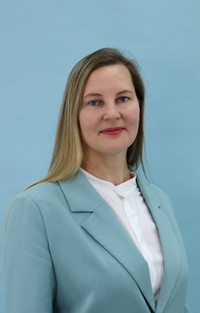Развитие речи детей с расстройствами аутистического спектра
- Рубрика: ИЗУЧЕНИЕ И ОБРАЗОВАНИЕ ЛИЦ С ОГРАНИЧЕННЫМИ ВОЗМОЖНОСТЯМИ ЗДОРОВЬЯ
- Файл статьи: PDF
Аннотация: Во всем мире с каждым годом увеличивается количество детей с расстройствами аутистического спектра (РАС). Речевые нарушения у детей с РАС вариативны и являются предметом изучения. В статье анализируются особенности речевого развития в норме и при аутистических расстройствах. Акцентируется внимание на особенностях сенсорного восприятия детей с аутизмом, его взаимосвязи с интеллектуальным и речевым развитием. Представлены в сравнении основные этапы формирования коммуникативной функции речи при онтогенезе и аутистическом дизонтогенезе. Рассмотрены особенности доречевого развития, предпосылки формирования номинативной речевой системы у детей с РАС и нормотипичных сверстников. Анализируются различные стратегии овладения речью, стадии формирования лексико-грамматического строя, диалогической и монологической форм коммуникации при нормативном варианте развития и у детей с РАС. Описаны особенности формирования коммуникативной ролевой модели «говорящий — слушающий» у детей с аутизмом. Делается вывод об искаженном варианте развития речи при расстройствах аутистического спектра, обусловленном нарушениями коммуникативного, социального поведения детей, коморбидными психоневрологическими заболеваниями. Подчеркивается особенность становления речи у детей с РАС — возможность ее формирования после сенситивного периода развития. Изложенный констатирующий материал основан на многолетнем практическом логопедическом опыте автора, полученном в Федеральном ресурсном центре по организации комплексного сопровождения детей с РАС (ФРЦ МГППУ).
Ключевые слова: расстройства аутистического спектра, РАС, детский аутизм, дети-аутисты, детская речь, развитие речи, речевая деятельность, гештальт-восприятие, нарушения речи, дизонтогенез.
Abstract: Every year, the number of children with autism spectrum disorders (ASD) increases all over the world. Speech disorders in children with ASD are variable and are the object of this investigation. The article analyzes the specific features of typical speech development and that of children with autistic disorders. Attention is focused on the features of sensory perception of children with autism and its relationship with intellectual and speech development. The main stages of the formation of the communicative function of speech during ontogenesis and autistic dysontogenesis are presented in comparison. The features of pre-speech development, the prerequisites for the formation of the nominative speech system in children with ASD and their typical peers are considered. Various strategies of speech acquisition and the stages of formation of the lexical and grammatical structure and dialogic and monologic forms of communication are analyzed in children with typical development and in children with ASD. The study describes the specific features of the formation of the communicative role model: “speaker — listener” in children with autism. The author makes a conclusion about a dis-torted version of the development of speech in cases of autism spectrum dis-orders, caused by violations of the communicative social behavior of children and comorbid neuropsychiatric conditions. The article reports a peculiarity of the formation of speech in children with ASD — the possibility of its formation after the sensitive period of development. The material presented is based on many years of practical logopedic experience of the author in the Federal Resource Center for the organi-zation of comprehensive support for children with ASD (FRC MSUPE).
Key words: autism spectrum disorders, ASD, children’s autism, autistic children, children’s speech, speech development, speech, gestalt perception, speech disorders, dysontogenesis.


